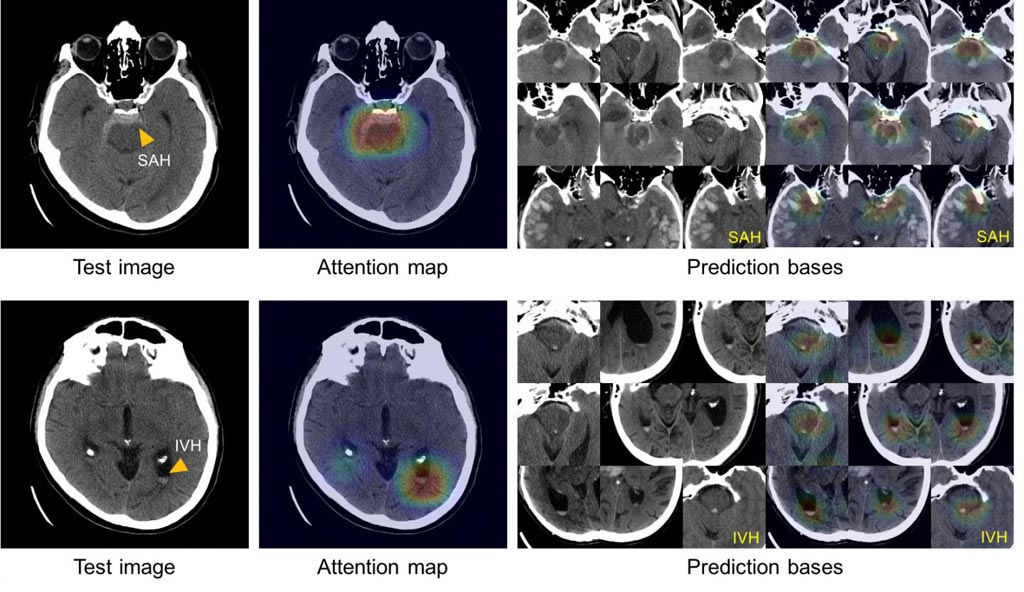New AI System Can Diagnose and Classify Intracranial Hemorrhage
By MedImaging International staff writers
Posted on 23 Jan 2019
Researchers from the Massachusetts General Hospital (Boston, MA, USA) have developed an artificial intelligence (AI) system that can quickly diagnose and classify brain hemorrhages, as well as provide the basis of its decisions from relatively small image datasets. The system could help hospital emergency departments in evaluating patients with symptoms of a potentially life-threatening stroke, allowing rapid application of the correct treatment.Posted on 23 Jan 2019
The researchers trained the system with 904 head CT scans, each consisting of around 40 individual images, that were labeled by neuroradiologists as to whether they depicted one of five hemorrhage subtypes, based on the location within the brain, or no hemorrhage. The team improved the accuracy of the deep-learning system by building in steps mimicking the way radiologists analyze images. These included adjusting factors such as contrast and brightness to reveal subtle differences not immediately apparent and scrolling through adjacent CT scan slices to determine whether or not something that appears on a single image reflects a real problem or is a meaningless artifact.

Image: These images show the system’s ability to explain its diagnosis of subarachnoid (left above) and intraventricular (left below) hemorrhage by displaying images with similar appearances (right) from an atlas of images used to train the system (Photo courtesy of Hyunkwang Lee, Harvard School of Engineering and Applied Sciences, and Sehyo Yune, MD, Massachusetts General Hospital Department of Radiology).
After the model system was created, the investigators tested it on two separate sets of CT scans – a retrospective set taken before the system was developed, consisting of 100 scans with and 100 without intracranial hemorrhage, and a prospective set of 79 scans with and 117 without hemorrhage, taken after the model was created. In its analysis of the retrospective set, the model system was as accurate in detecting and classifying intracranial hemorrhages as the radiologists that had reviewed the scans had been. In its analysis of the prospective set, the system proved to be even better than non-expert human readers.
To solve the “black box” problem, or the inability of systems to explain how they arrived at a decision, the team had the system review and save the images from the training dataset that most clearly represented the classic features of each of the five hemorrhage subtypes. Using this atlas of distinguishing features, the system is able to display a group of images similar to those of the CT scan being analyzed in order to explain the basis of its decisions.
“Rapid recognition of intracranial hemorrhage, leading to prompt appropriate treatment of patients with acute stroke symptoms, can prevent or mitigate major disability or death,” said co-author Michael Lev, MD, MGH Radiology. “Many facilities do not have access to specially trained neuroradiologists – especially at night or over weekends – which can require non-expert providers to determine whether or not a hemorrhage is the cause of a patient’s symptoms. The availability of a reliable, ‘virtual second opinion’ – trained by neuroradiologists – could make those providers more efficient and confident and help ensure that patients get the right treatment.”
“In addition to providing that much needed virtual second opinion, this system also could be deployed directly onto scanners, alerting the care team to the presence of a hemorrhage and triggering appropriate further testing before the patient is even off the scanner,” added co-author Shahein Tajmir, MD, MGH Radiology. “The next step will be to deploy the system into clinical areas and further validate its performance with many more cases. We are currently building a platform to allow for the widespread application of such tools throughout the department. Once we have this running in the clinical setting, we can evaluate its impact on turnaround time, clinical accuracy and the time to diagnosis.”
Related Links:
Massachusetts General Hospital














